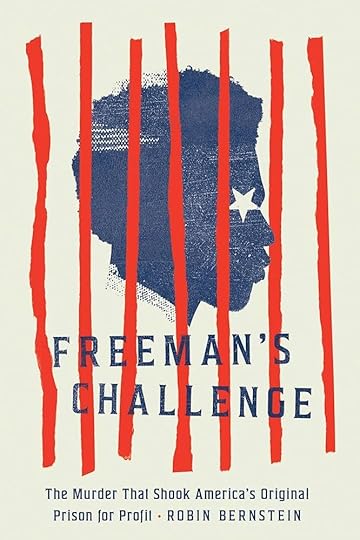Review: Freeman’s Challenge by Robin Bernstein

Freeman’s Challenge is an informative and educational piece of historical work that explains the one of the first for-profit prisons and a brutal murder of a family that shook the town of Auburn in New York. I greatly appreciated Robin Bernstein’s opening chapter regarding the contextual history of the land that would become Auburn. Bernstein cites a little known, but very significant campaign during the American Revolution known as the 1779 Sullivan Campaign. In this campaign, George Washington ordered the destruction of all Haudenosaunee villages allied with the British (all of the Haudenosaunee tribes except the Oneida, who allied with the Continentals.) The land of one Cayuga village, after its destruction, was purchased by a soldier who had taken part in the Sullivan Campaign. This land would become the town of Auburn, with one of its main features being a prison (and subsequent style of prison system,) which by 1823 would “directly and indirectly infuse Auburn with the equivalent of two million dollars of today’s dollars.” (p. 13) Bernstein goes on to explain that “white entrepreneurs and politicians of Auburn accomplished…a prison [planned] around factories, in relation to their [river] power source, with the purpose of enriching a town, its businesses, and its businessmen…They viewed a prison as a vehicle by which to soak up state funds, build banking, stimulate commerce, manufacture goods, and develop land and waterways. In short, they reimagined the prison as an infrastructure for capitalism.” (p. 13)
William Freeman was a young Afro-Indigenous man from Auburn. He was accused of stealing a white woman’s horse and thrown into the Auburn prison. Throughout his incarceration, Freeman was adamant that he had not committed the crime. In turn, he resisted doing the forced labor the inmates were tasked with. He often told the guards and supervisors that he would not work if he was “deriving no benefit” from the labor–i.e. receiving pay. Always standing up for his innocence, Freeman was subjected to cruel punishments such as the “shower bath,” which is essentially a form of waterboarding. One such incidence of Freeman’s resistance resulted in one of the guards beating him with a board across the head. Freeman suffered a life-changing blow to the head which resulted in loss of hearing in one ear and a nasty concussion which likely lead to lifelong cognitive problems.
After five years of incarceration, Freeman returned home to find work to no avail. His family members found him much changed no doubt due to the abuse he suffered in Auburn Prison, but also due to the severe head injury that had left him cognitively changed. Freeman grew frustrated in trying to find work and began to repeat his earlier claims that he should have been paid for his time working in Auburn Prison. Bernstein explains that Freeman’s claims to receive pay were not as outlandish as some believed in that “practices for paying incarcerated people were well established in the United States. Since 1699, American Houses of Correction and later carceral systems had developed ways for prisoners to earn money in captivity…the most widespread mechanism was called overstint. In this system, an incarcerated person was required to labor a set amount of time or until a predetermined amount of work was accomplished–and any work beyond that “stint” earned money for the prisoner.” (p. 78) Because Auburn State Prison had been conceived and operated in ties with the local economy in exploiting prisoners for profit, they inherently did not pay the incarcerated individuals laboring inside its walls.
Freeman’s frustration and anguish came to head when he decided to “make someone pay” for what he was owed. The result was a shocking and seemingly random murder of the local Van Nest family that shook not just Auburn, but the state of New York and beyond. The press attention on the case drummed up racist theories and rhetoric, many people often attributing Freeman’s capacity to commit murder to his Afro-Indigenous heritage. Many could not accept that Freeman did not have an ulterior motive other than “someone had to pay” for what he had been through and to receive what he was owed.
William Henry Seward would later represent Freeman in court, his main argument being that “Freeman had become insane because of excessive violence [endued in prison], particularly the head injury.” (p. 135) Bernstein offers a balanced view of these historical events, allowing the reader to ruminate on violence begetting violence, of malice not being born but being created–a product of an abusive and exploitative system already operating on racist and colonial ideals interwoven with the industry of the mid 19th century.



